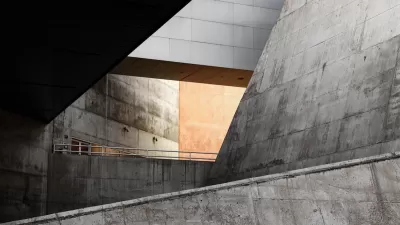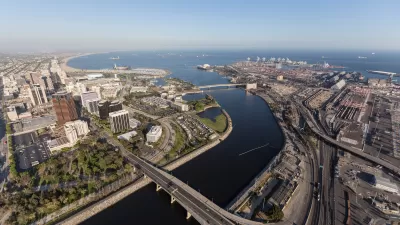Patrick Smith believes that Senegal's ambitious new airport is not only unnecessary, but in light of the country's massive poverty and environmental problems, actually "obscene."
"[A] brand-new international airport is in the works for Dakar [Senegal], to be built 28 miles southeast of the city. Completion of Blaise Diagne International, named in honor of the first black African elected to the French Parliament, is expected sometime in 2011.
I happen to think it's a terrible idea. Or a needless one, at any rate.
As a general rule, you build a replacement airport because the existing one has run out of room or is hopelessly overcrowded. Its faults duly noted, Senghor International is plenty spacious. There is loads of room on the tarmac and it has a long (if unusually narrow), instrument-equipped runway. What it needs is a larger, more modern passenger complex. There is ample room for that as well, and obviously one could be built for a fraction of the estimated $450 million to be spent on a whole new airport.
Senghor is also close to the city center. Placement of the new airport, far to the south, is a curious one. On the one hand it will make things easier for the thousands of European tourists who vacation each year at the beach resorts along Senegal's southwest coast. On the other hand, it will require that a massive new highway be built. The existing southbound road out of Dakar is a nightmare of traffic, dust and fumes, and a driving time of up to three hours to or from the airport would be unacceptable. Construction of the new highway has already begun."
FULL STORY: Ask the pilot

What ‘The Brutalist’ Teaches Us About Modern Cities
How architecture and urban landscapes reflect the trauma and dysfunction of the post-war experience.

‘Complete Streets’ Webpage Deleted in Federal Purge
Basic resources and information on building bike lanes and sidewalks, formerly housed on the government’s Complete Streets website, are now gone.

The VW Bus is Back — Now as an Electric Minivan
Volkswagen’s ID. Buzz reimagines its iconic Bus as a fully electric minivan, blending retro design with modern technology, a 231-mile range, and practical versatility to offer a stylish yet functional EV for the future.

Healing Through Parks: Altadena’s Path to Recovery After the Eaton Fire
In the wake of the Eaton Fire, Altadena is uniting to restore Loma Alta Park, creating a renewed space for recreation, community gathering, and resilience.

San Diego to Rescind Multi-Unit ADU Rule
The city wants to close a loophole that allowed developers to build apartment buildings on single-family lots as ADUs.

Electric Vehicles for All? Study Finds Disparities in Access and Incentives
A new UCLA study finds that while California has made progress in electric vehicle adoption, disadvantaged communities remain underserved in EV incentives, ownership, and charging access, requiring targeted policy changes to advance equity.
Urban Design for Planners 1: Software Tools
This six-course series explores essential urban design concepts using open source software and equips planners with the tools they need to participate fully in the urban design process.
Planning for Universal Design
Learn the tools for implementing Universal Design in planning regulations.
City of Albany
UCLA Lewis Center for Regional Policy Studies
Mpact (formerly Rail~Volution)
Chaddick Institute at DePaul University
City of Piedmont, CA
Great Falls Development Authority, Inc.
HUDs Office of Policy Development and Research





























